We may receive a commission when you use our affiliate links. However, this does not impact our recommendations.
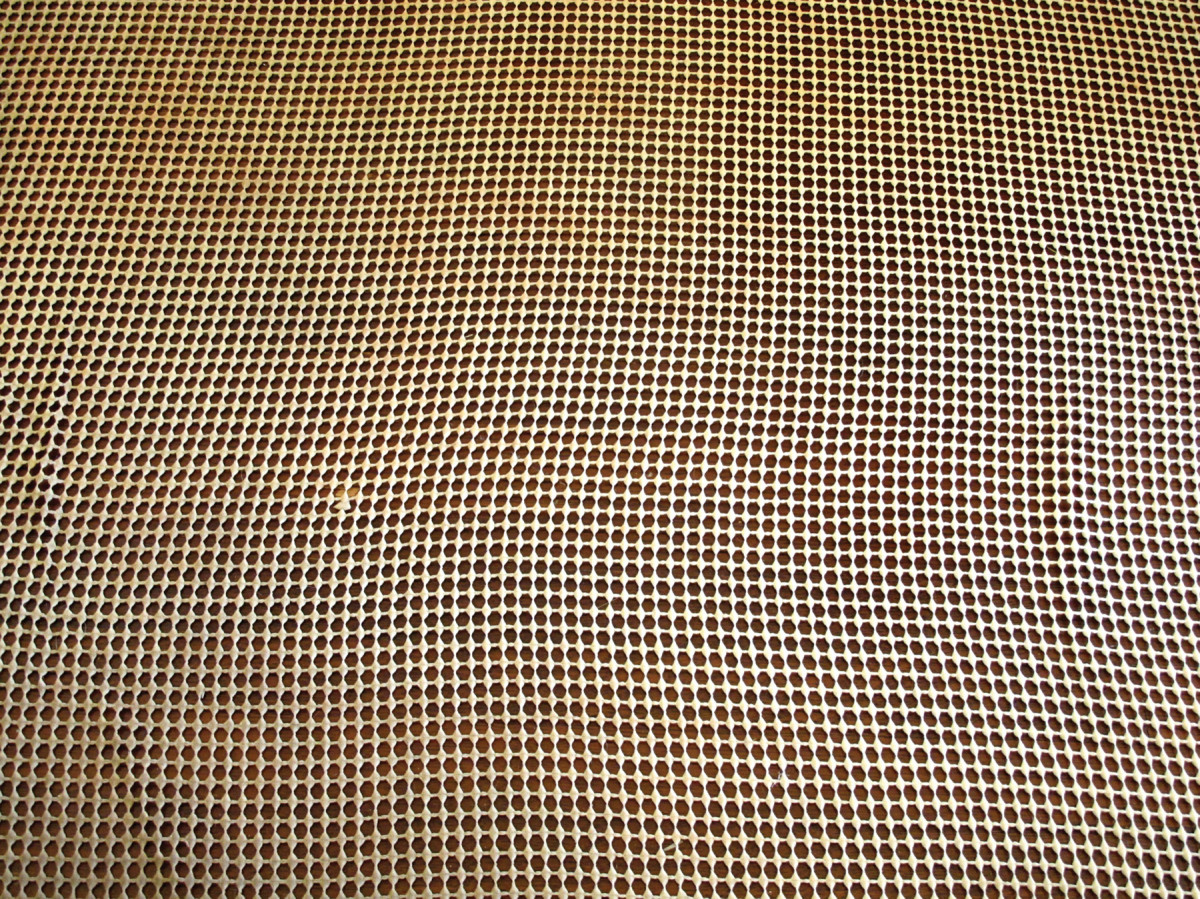
Floor mat. This type of floor mat partially dissolved and stuck to a wooden floor in my son’s house. How could I remove the hardened fragments without damaging the finish?
A combination of knowledge and experience.
All sorts of damage can occur to a finish. I’ve written about the most common problems and how to fix them many times. Four of the articles I wrote for Popular Woodworking are included in my book, “Flexner on Finishing.”
These articles deal with problems such as water rings, rubs and scrapes, magic-marker and crayon marks, dripped candle wax and more. It’s good to know how to fix these problems, but there are so many other things that can happen – many so unusual that you’ll never find instructions for fixing them.
In these situations you have no choice but to come up with the fix yourself. Your ability to do this improves with experience, of course, but most important is a good basic knowledge of finishes and solvents so you don’t cause more damage.
This knowledge isn’t difficult. It comes down to the way you organize and define the finishes and solvents.
Finishes
Most important for understanding finishes is knowing how they dry or cure.
Oil-based varnish (including polyurethane varnish), catalyzed finishes and drying oils, such as linseed oil, tung oil and oil/varnish blend, cure by crosslinking. They can’t be redissolved with their solvent, but they can sometimes be damaged by extended contact with strong solvents such as acetone and lacquer thinner.
Lacquer, shellac and wax dry simply by the evaporation of their solvent. They can then be redissolved with their solvent at any time.
Water-based finishes are unique. They dry partly by crosslinking and partly by the evaporation of water and a slow-evaporating solvent. Some brands are susceptible to being damaged by many solvents, including alcohol, xylene, toluene, lacquer thinner and acetone. Other brands are resistant to one or more of these solvents.
Solvents
There are several families of solvents typically available at paint stores and home centers.
The petroleum-distillate family includes, from weakest to strongest, mineral spirits (paint thinner), naphtha, xylene and toluene. The ketone family includes acetone and methyl ethyl ketone (MEK). The only alcohol still widely available is denatured alcohol.
Lacquer thinner is a combination of as many as six solvents, the most important of which, for our purposes, being acetone and other similar solvents that dissolve lacquer.
Here’s how I put this knowledge to use in a real situation that I encountered recently at my son’s house.
The Problem & Fix
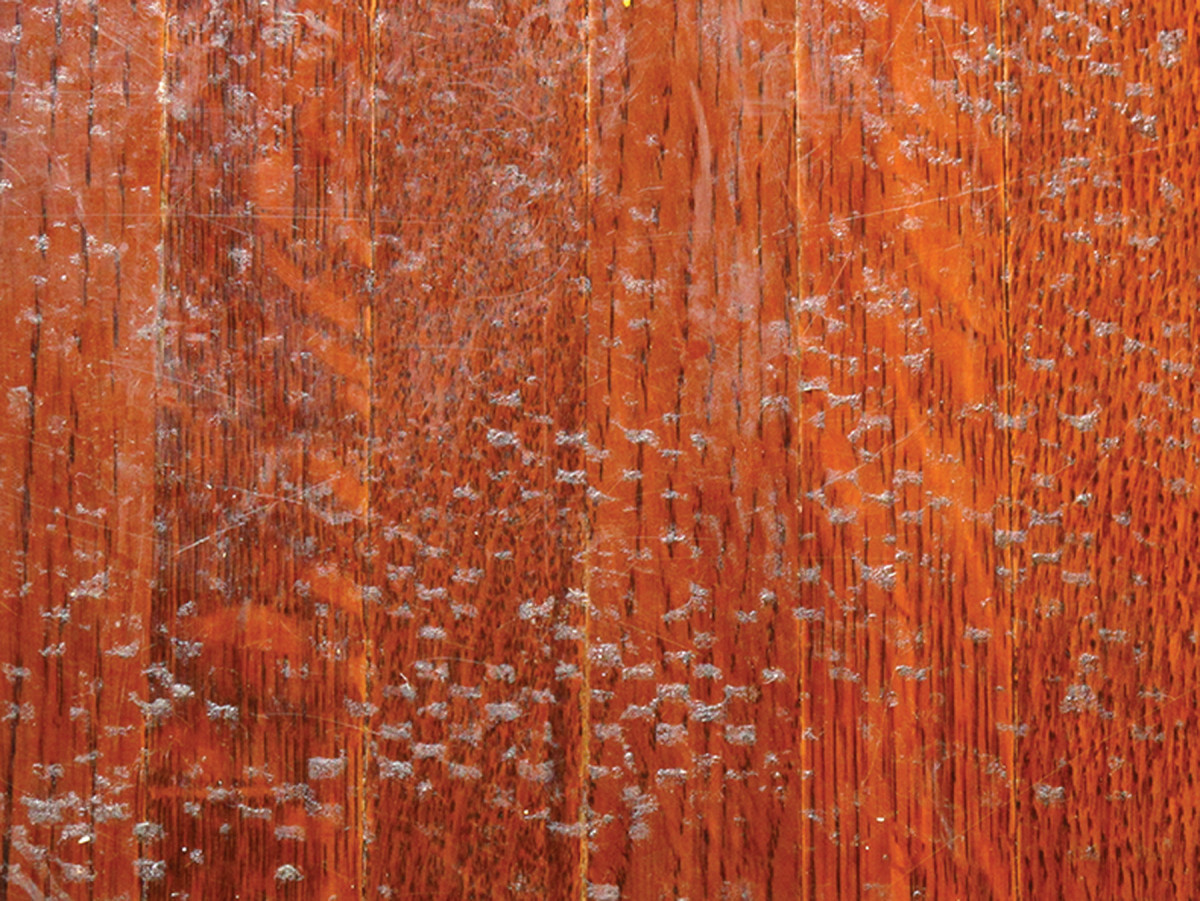
Particles stuck to floor. Here is a small section of the floor showing particles of the floor mat stuck to the finish. The particles dried very hard.
A toilet overflowed and soaked the floor in a nearby room causing the floor mat (under the rug) to become stuck to the wood. When pulled up, pieces of the mat stuck to the floor and became very hard as they dried out. The challenge was to remove these pieces without damaging the finish on the floor.
Here’s how my thinking went.
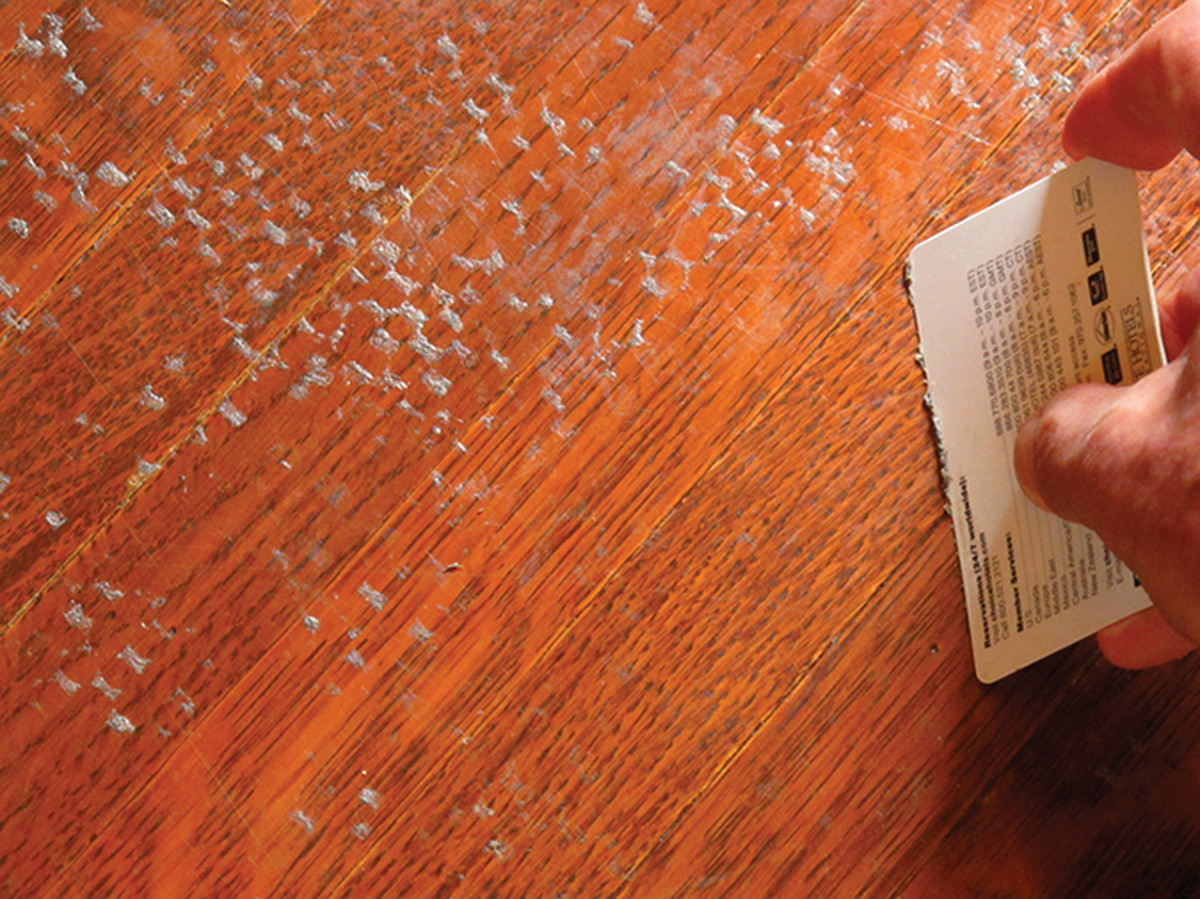
Scraping softened particles. Wetting small sections of the floor for several minutes at a time using a water-dampened cloth softened the particles enough that I could scrape them off using a credit-type card. This method worked, but it was very slow.
The dried pieces were very hard. I first considered abrading them off, but it would be difficult to avoid leaving scratches in the gloss, water-based, polyurethane finish, and abrading might cut through the finish and some of the stain underneath. This risk was especially great at the raised ridges where the slightly cupped floorboards joined. So I ruled out this solution.
But not entirely. I could also abrade carefully and apply another coat of water-based finish on top to hide the scratches. But I didn’t want to do this because it would involve removing all the furniture and disrupting the household.
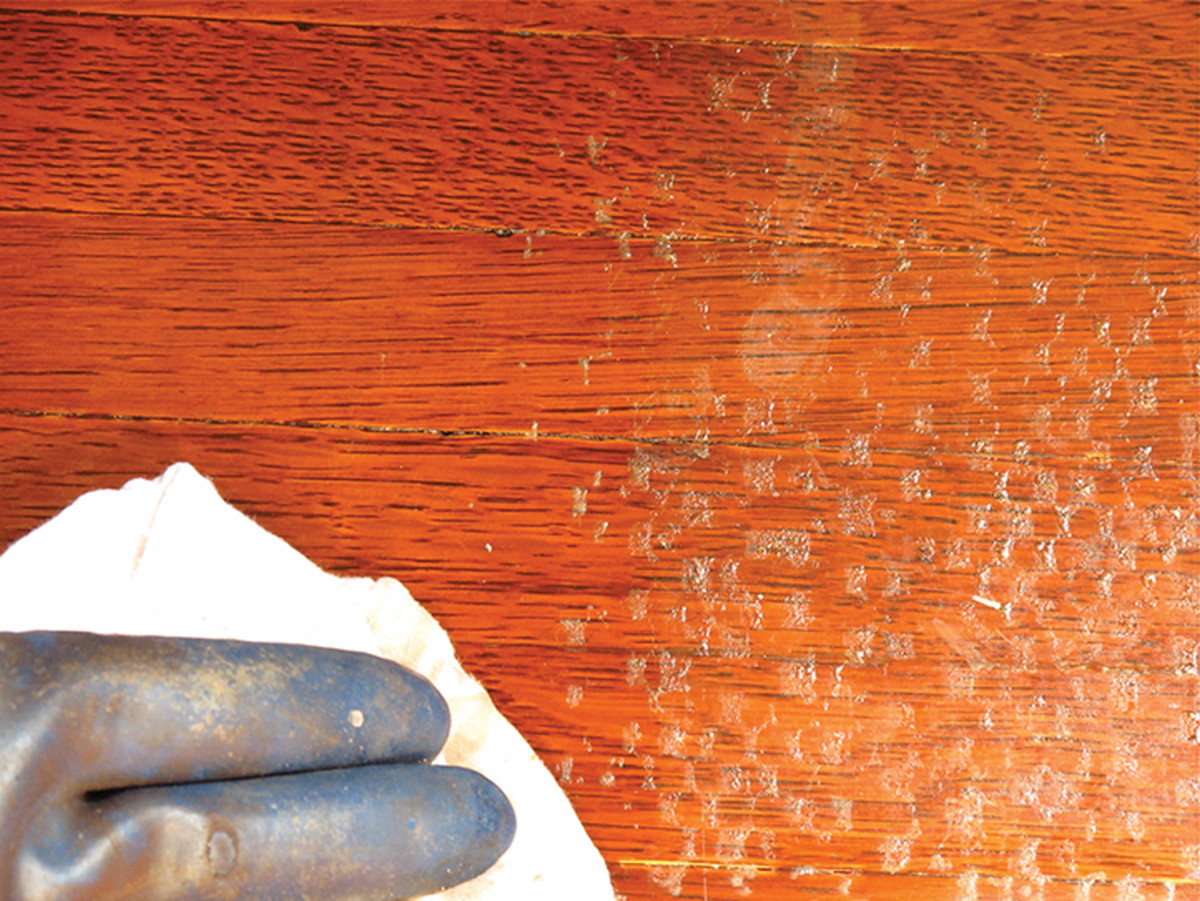
Cleaning with alcohol. In an attempt to find a faster method of removing the dried floor-mat particles, I tried rubbing with denatured alcohol after checking that this solvent wouldn’t damage the finish. It worked much faster.
Because the finish was water-based polyurethane rather than oil-based polyurethane, my options using a solvent to remove the mat particles were limited. Many solvents damage water-based polyurethane that don’t damage oil-based polyurethane.
So I quickly ruled out trying the solvents that would most likely dissolve the mat particles because they would also likely damage the finish. These included the common solvents acetone, lacquer thinner, xylene, toluene and alcohol. Mineral spirits and naphtha wouldn’t cause any harm to the finish if used sparingly, but I really doubted they would dissolve the particles.
I reasoned that if water had caused the problem, maybe I could use it to soften the particles enough to scrape them off the floor. I began soaking small sections of the floor with wet rags, being careful not to overdo it and cause the finish to peel. After a few minutes the particles turned white.
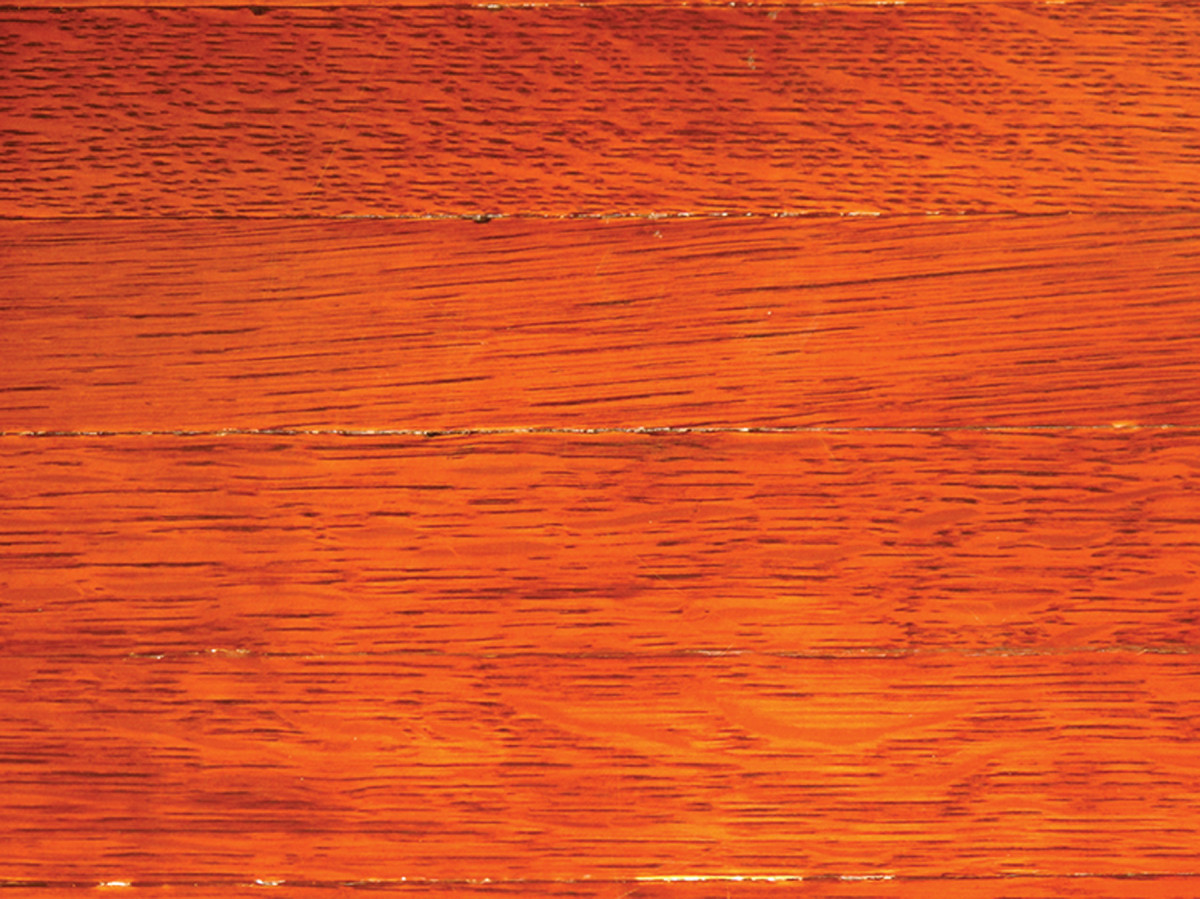
Problem solved. Here’s a section of the floor with the floor-mat particles completely cleaned off. No damage was done to the water-based finish.
Then I scraped off the softened particles with a plastic credit-type card. This worked well, but it was too slow for an 8′ x 10′ area. I needed to come up with a faster way.
Alcohol is the mildest of the solvents I had ruled out. I knew from experience that it softens and dulls most water-based finishes. But water-based finishes are formulated differently, so it was worth a try on a small, somewhat-hidden area to find out what would happen.
I wetted a cloth with denatured alcohol and began rubbing in the most inconspicuous part of the floor. I watched closely what was happening, including trying to dig my fingernail into the finish to see if the alcohol had softened it. It had a little but not enough to cause a smear, and the finish didn’t dull.
So this was a faster way. I removed all the mat particles within two hours.
Lessons
Notice several points about this situation and my approach to it.
First, I had never seen this problem before, and I doubted there were many others who had seen it either.
Second, I began ruling out possible solutions for various reasons, the most important being that I wanted to remove the mat particles without damaging the finish. I used my knowledge of finishes and solvents to eliminate many of the solvents that I suspected would remove the mat particles, but would also likely damage the water-based finish. I didn’t have to try each.
Third, I tried one possible solution and found that it worked. But it was slow, so I searched for a faster method. Here, I had to carefully try a solvent to find out if it would dissolve the particles, and to learn how resistant the finish would be.
So a combination of basic knowledge and a little trial-and-error solved the problem.
Here are some supplies and tools we find essential in our everyday work around the shop. We may receive a commission from sales referred by our links; however, we have carefully selected these products for their usefulness and quality.








